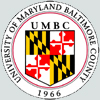| |||||||||||||||||||||||||||||||||||||||||||||||||||||||||||
Tips:  Range on the Protein: Protein ID Protein Position Domain Position: 
|
|---|
Weblogos are Copyright (c) 2002 Regents of the University of California
| DMDM_info@umbc.edu | 1000 Hilltop Circle, Baltimore, MD 21250 | Department of Biological Sciences | Phone: 410-455-2258 |




 Rem, Rem2, Rad, Gem/Kir (RGK) subfamily of Ras GTPases. RGK subfamily. The RGK (Rem, Rem2, Rad, Gem/Kir) subfamily of Ras GTPases are expressed in a tissue-specific manner and are dynamically regulated by transcriptional and posttranscriptional mechanisms in response to environmental cues. RGK proteins bind to the beta subunit of L-type calcium channels, causing functional down-regulation of these voltage-dependent calcium channels, and either termination of calcium-dependent secretion or modulation of electrical conduction and contractile function. Inhibition of L-type calcium channels by Rem2 may provide a mechanism for modulating calcium-triggered exocytosis in hormone-secreting cells, and has been proposed to influence the secretion of insulin in pancreatic beta cells. RGK proteins also interact with and inhibit the Rho/Rho kinase pathway to modulate remodeling of the cytoskeleton. Two characteristics of RGK proteins cited in the literature are N-terminal and C-terminal extensions beyond the GTPase domain typical of Ras superfamily members. The N-terminal extension is not conserved among family members; the C-terminal extension is reported to be conserved among the family and lack the CaaX prenylation motif typical of membrane-associated Ras proteins. However, a putative CaaX motif has been identified in the alignment of the C-terminal residues of this CD.
Rem, Rem2, Rad, Gem/Kir (RGK) subfamily of Ras GTPases. RGK subfamily. The RGK (Rem, Rem2, Rad, Gem/Kir) subfamily of Ras GTPases are expressed in a tissue-specific manner and are dynamically regulated by transcriptional and posttranscriptional mechanisms in response to environmental cues. RGK proteins bind to the beta subunit of L-type calcium channels, causing functional down-regulation of these voltage-dependent calcium channels, and either termination of calcium-dependent secretion or modulation of electrical conduction and contractile function. Inhibition of L-type calcium channels by Rem2 may provide a mechanism for modulating calcium-triggered exocytosis in hormone-secreting cells, and has been proposed to influence the secretion of insulin in pancreatic beta cells. RGK proteins also interact with and inhibit the Rho/Rho kinase pathway to modulate remodeling of the cytoskeleton. Two characteristics of RGK proteins cited in the literature are N-terminal and C-terminal extensions beyond the GTPase domain typical of Ras superfamily members. The N-terminal extension is not conserved among family members; the C-terminal extension is reported to be conserved among the family and lack the CaaX prenylation motif typical of membrane-associated Ras proteins. However, a putative CaaX motif has been identified in the alignment of the C-terminal residues of this CD. No pairwise interactions are available for this conserved domain.
No pairwise interactions are available for this conserved domain.



















